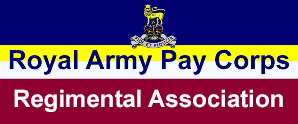
RAPC Virtual Museum

SECOND WORLD WAR
D-Day (Germany and BAOR)
Background
Unknown to many, the British Army of the Rhine was first established as an occupational force after the Great War of 1914 – 1918. It then went on to be disbanded in 1929. Little did people know that only 15 years later it would be back firmly in position.
The second coming came about with the creation of Twenty-first Army Group, assigned with the invasion of Europe. Formed in September 1943 in England and commanded by General (later Field Marshal) Sir Bernard Montgomery, it initially controlled all ground forces in Operation Overlord. When sufficient American forces had landed, their own 12th Army Group was activated, under General Omar Bradley and 21st Army Group was left with British Second Army and First Canadian Army.
After the successful Normandy landings, the units of 21st Army Group crossed the river Rhine near the Germany city of Wesel on 23 March 1945. After an advance which was thoroughly resisted, the British formations, along with the Canadians and Americans advanced into the German counties of Nordrhein-Westfalen, Niedersachsen and Schleswig-Holstein . This established the British Army occupying the north of the country.
At the February 1945 Yalta Conference (and confirmed at the July 1945 Potsdam Conference) it was agreed that it should be divided into four with the addition of a small French Zone (adjacent to the Franco-German border). Similar arrangements were agreed for Austria and the City of Berlin which was otherwise deep in East Germany (Russian Zone of Occupation). The earlier arrangement for the transfer of East Prussia and the move of the eastern border to the Oder Neisse Line remained unaltered.
The map above shows the revised Zones, you will see that in addition to the new French Zone, the border of the British/American Zone has been moved north and a small American enclave round the River Weser including the Bremen Docks (which formed the ocean going terminal for military traffic from America). Inset is the Canadian Army Occupation Force area.
Three months after the war had ended, 21st Army Group was re-designated “British Army of the Rhine”. This occupational force, which gained its new title on 25 August 1945 consisted of 80,000 men and formed the following:
- 1st Corps District
- 8th Corps District
- 30th Corps District
- British Troops Berlin
